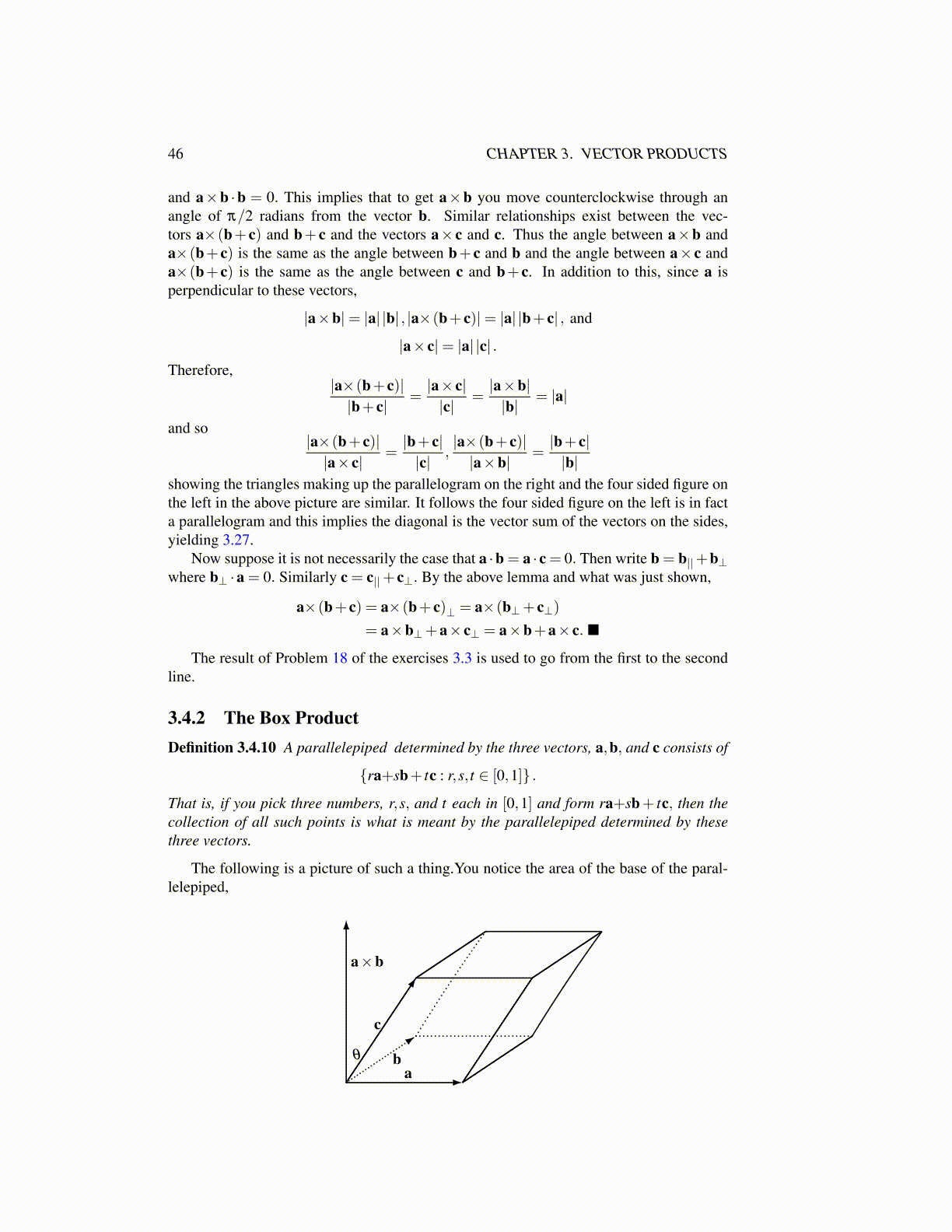
46 CHAPTER 3. VECTOR PRODUCTS
and a×b ·b = 0. This implies that to get a×b you move counterclockwise through anangle of π/2 radians from the vector b. Similar relationships exist between the vec-tors a×(b+ c) and b+ c and the vectors a× c and c. Thus the angle between a×b anda×(b+ c) is the same as the angle between b+ c and b and the angle between a× c anda×(b+ c) is the same as the angle between c and b+ c. In addition to this, since a isperpendicular to these vectors,
|a×b|= |a| |b| , |a×(b+ c)|= |a| |b+ c| , and
|a× c|= |a| |c| .Therefore,
|a×(b+ c)||b+ c|
=|a× c||c|
=|a×b||b|
= |a|
and so|a×(b+ c)||a× c|
=|b+ c||c|
,|a×(b+ c)||a×b|
=|b+ c||b|
showing the triangles making up the parallelogram on the right and the four sided figure onthe left in the above picture are similar. It follows the four sided figure on the left is in facta parallelogram and this implies the diagonal is the vector sum of the vectors on the sides,yielding 3.27.
Now suppose it is not necessarily the case that a ·b = a · c = 0. Then write b = b||+b⊥where b⊥ ·a = 0. Similarly c = c||+ c⊥. By the above lemma and what was just shown,
a×(b+ c) = a×(b+ c)⊥ = a×(b⊥+ c⊥)= a×b⊥+a× c⊥ = a×b+a× c. ■
The result of Problem 18 of the exercises 3.3 is used to go from the first to the secondline.
3.4.2 The Box ProductDefinition 3.4.10 A parallelepiped determined by the three vectors, a,b, and c consists of
{ra+sb+ tc : r,s, t ∈ [0,1]} .
That is, if you pick three numbers, r,s, and t each in [0,1] and form ra+sb+ tc, then thecollection of all such points is what is meant by the parallelepiped determined by thesethree vectors.
The following is a picture of such a thing.You notice the area of the base of the paral-lelepiped,
ab
c
a×b
θ